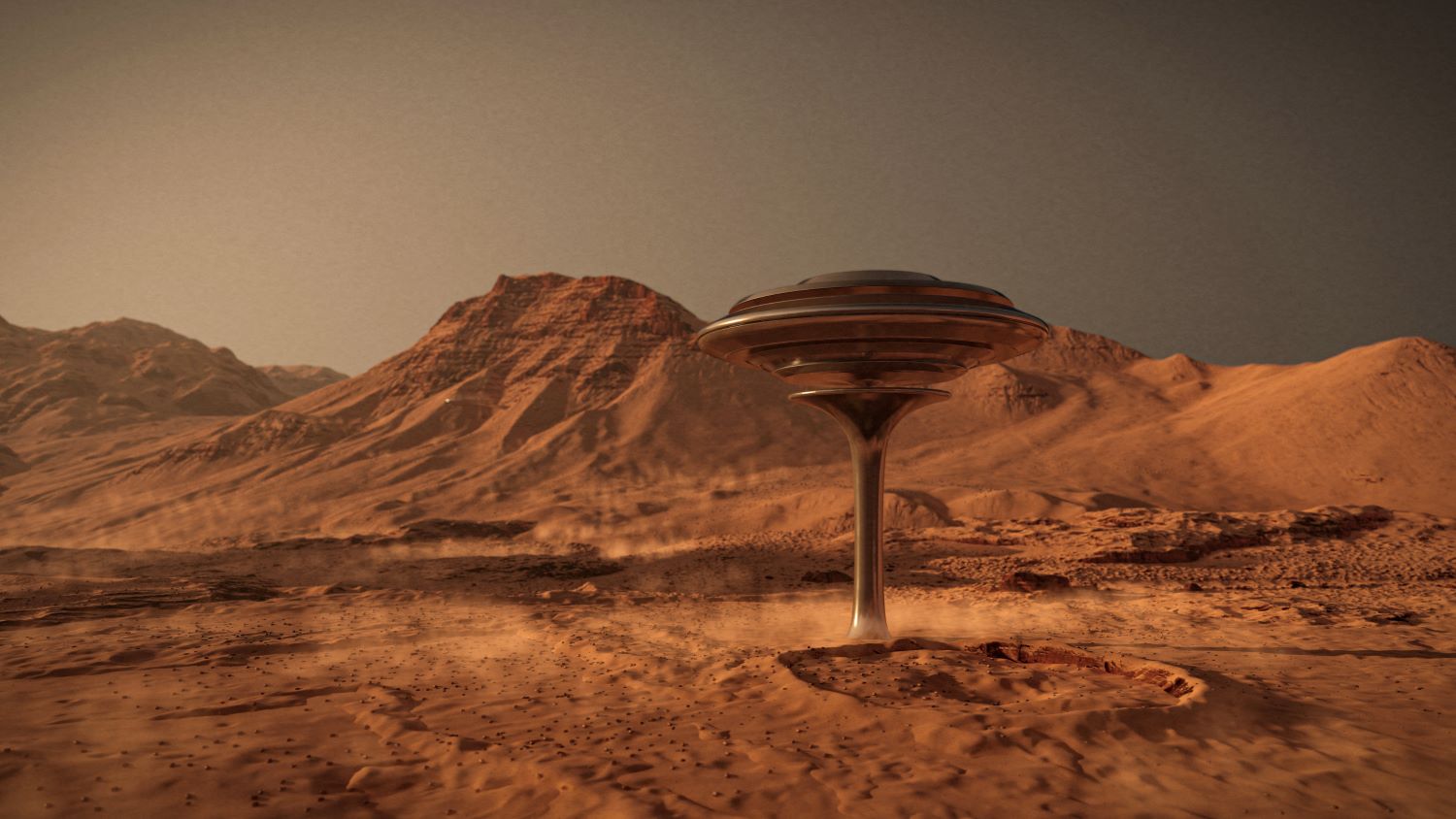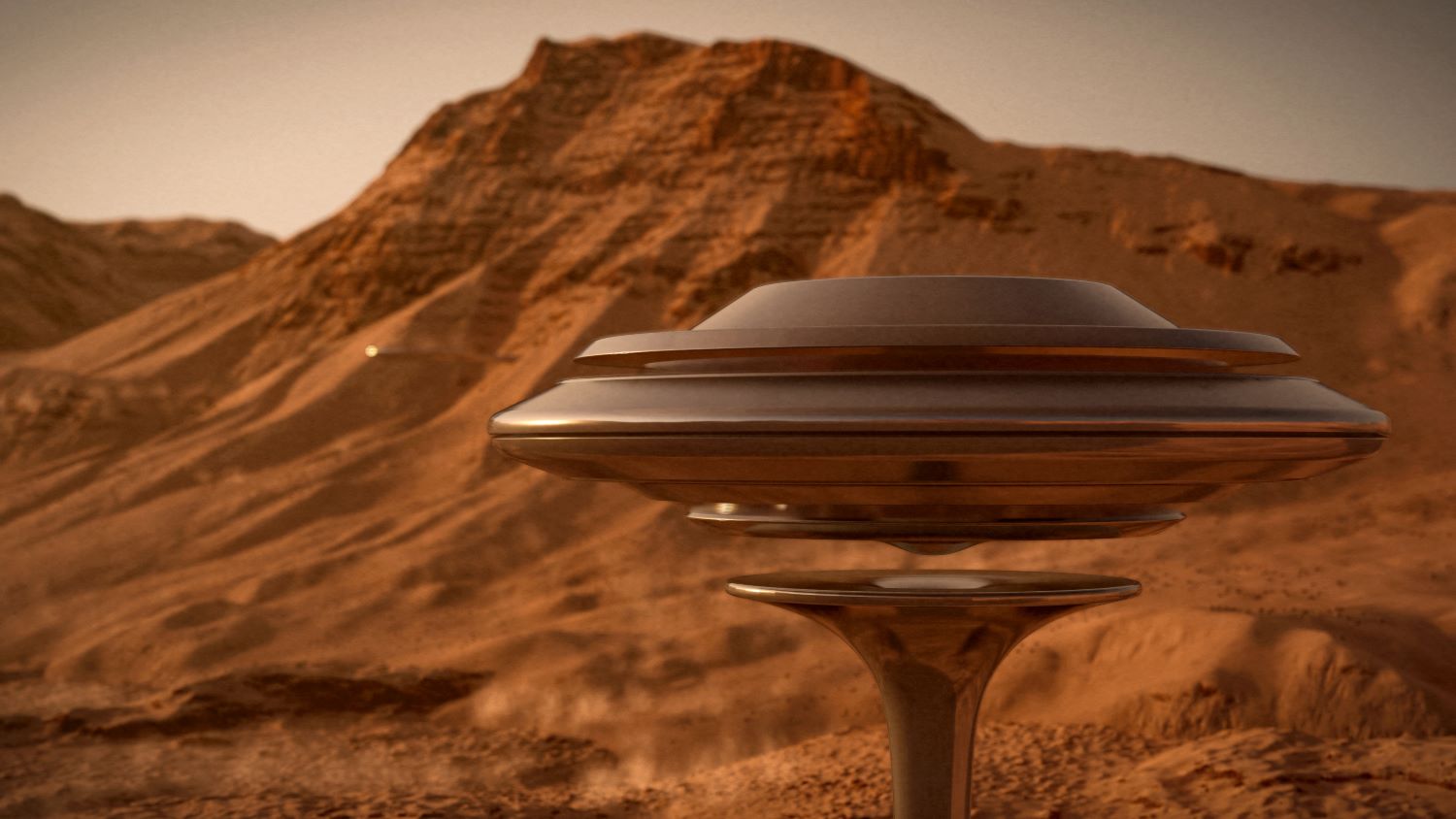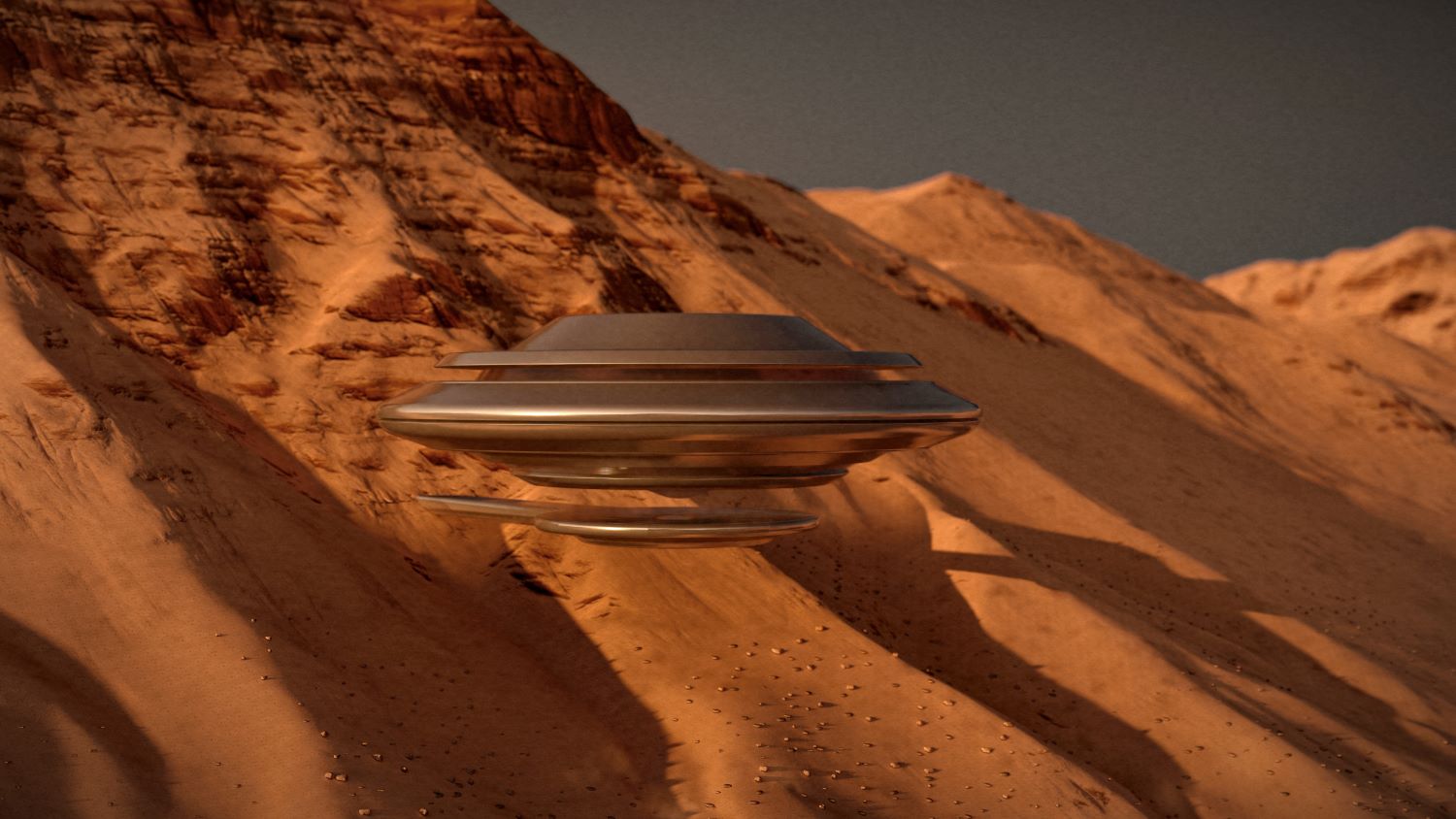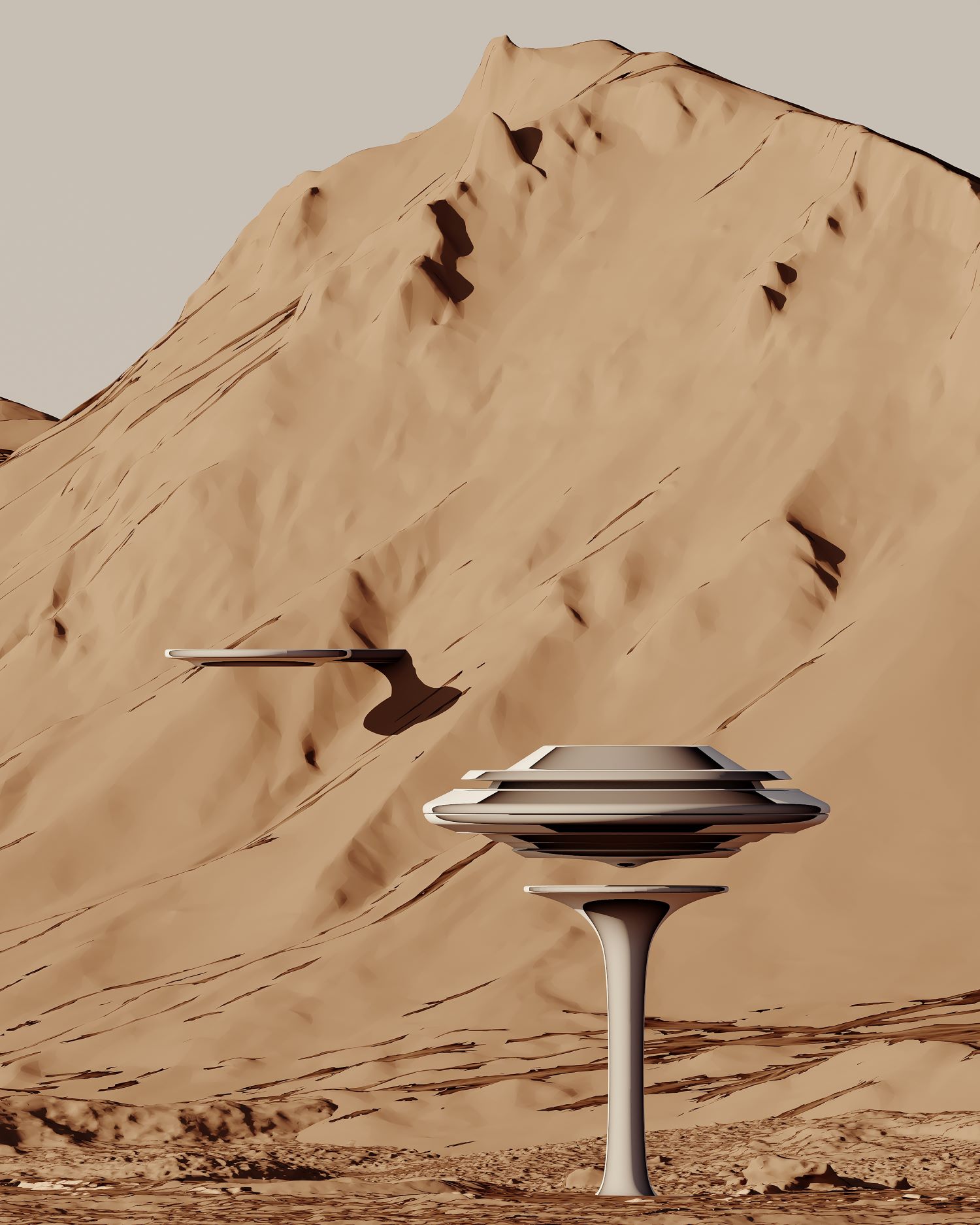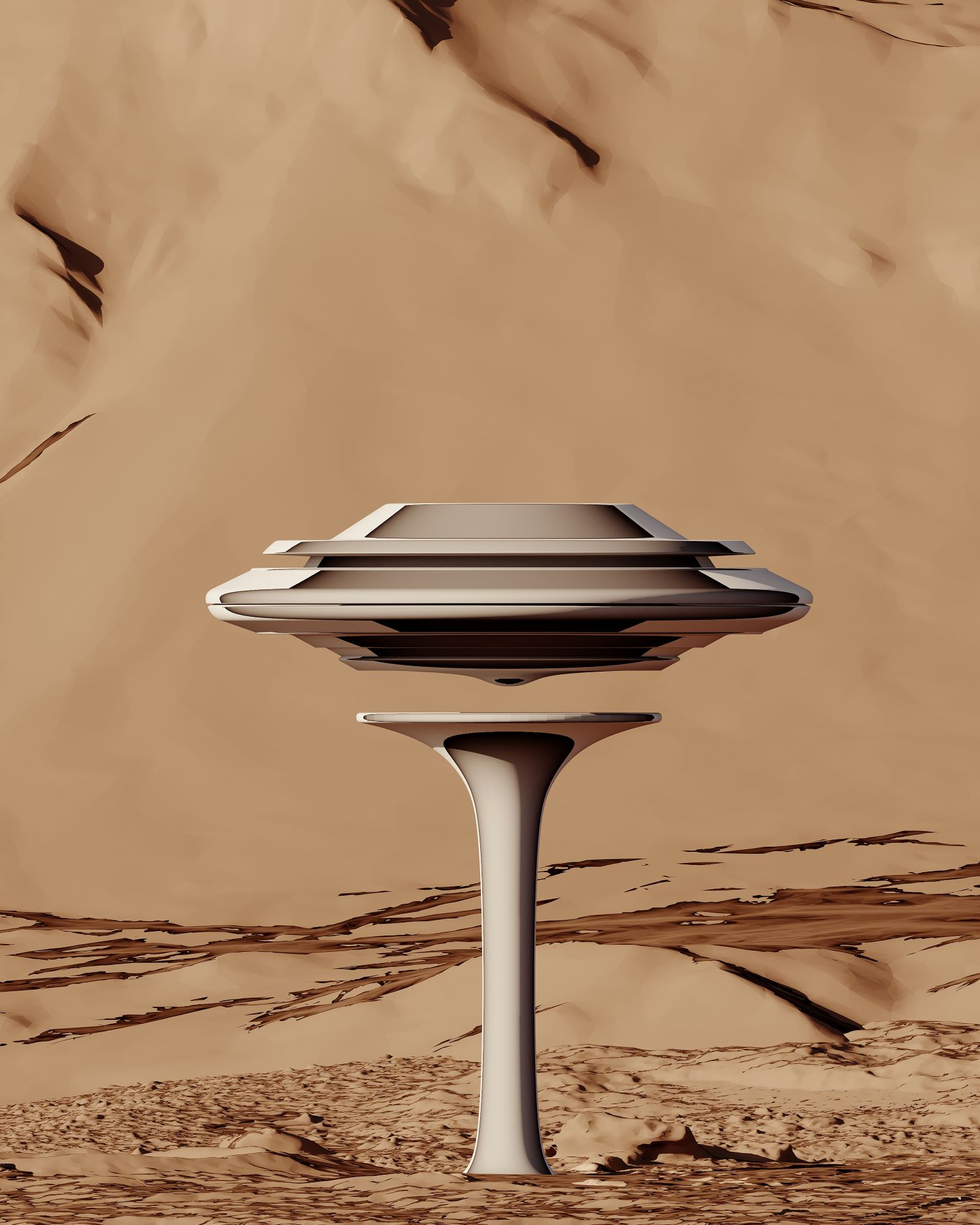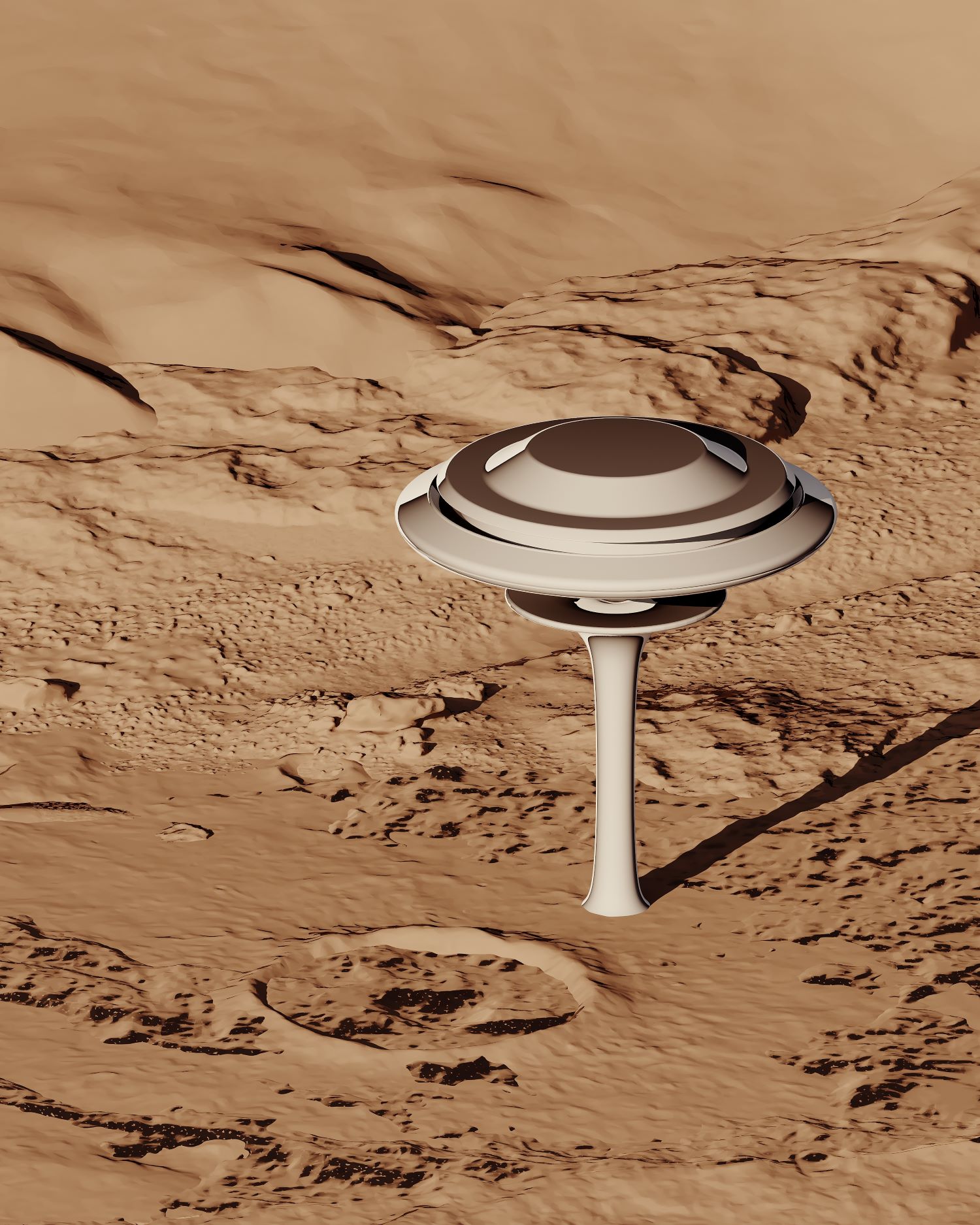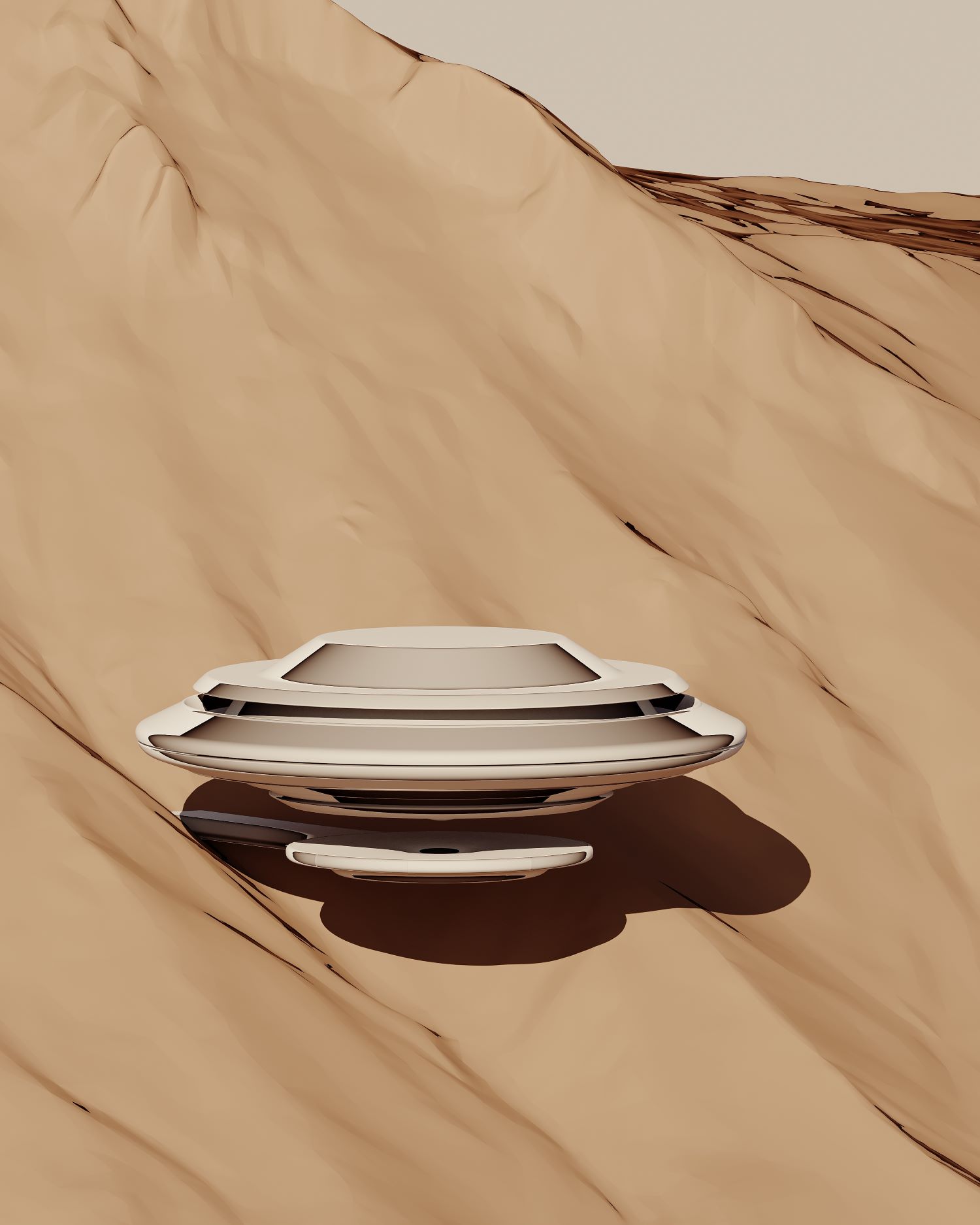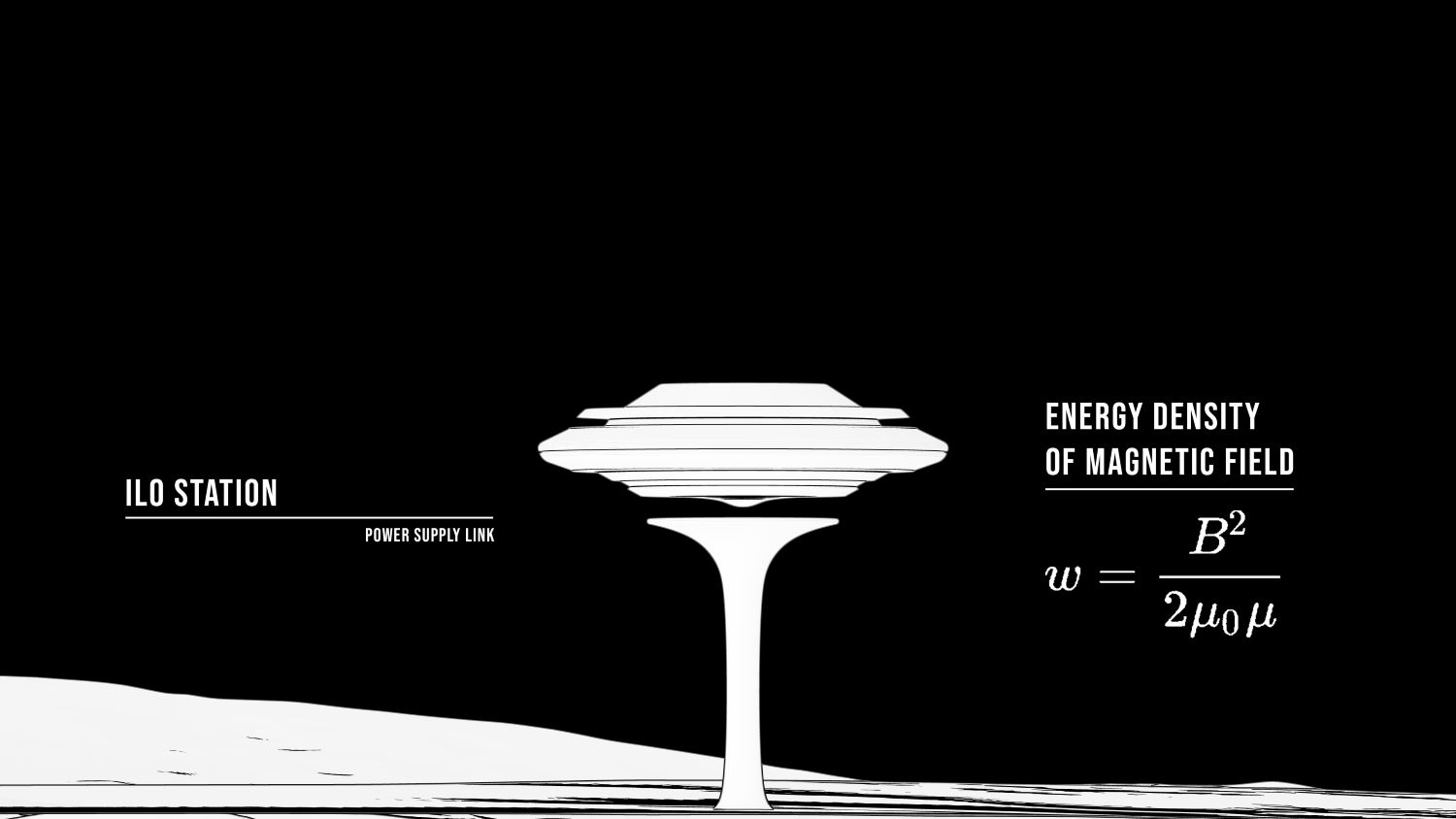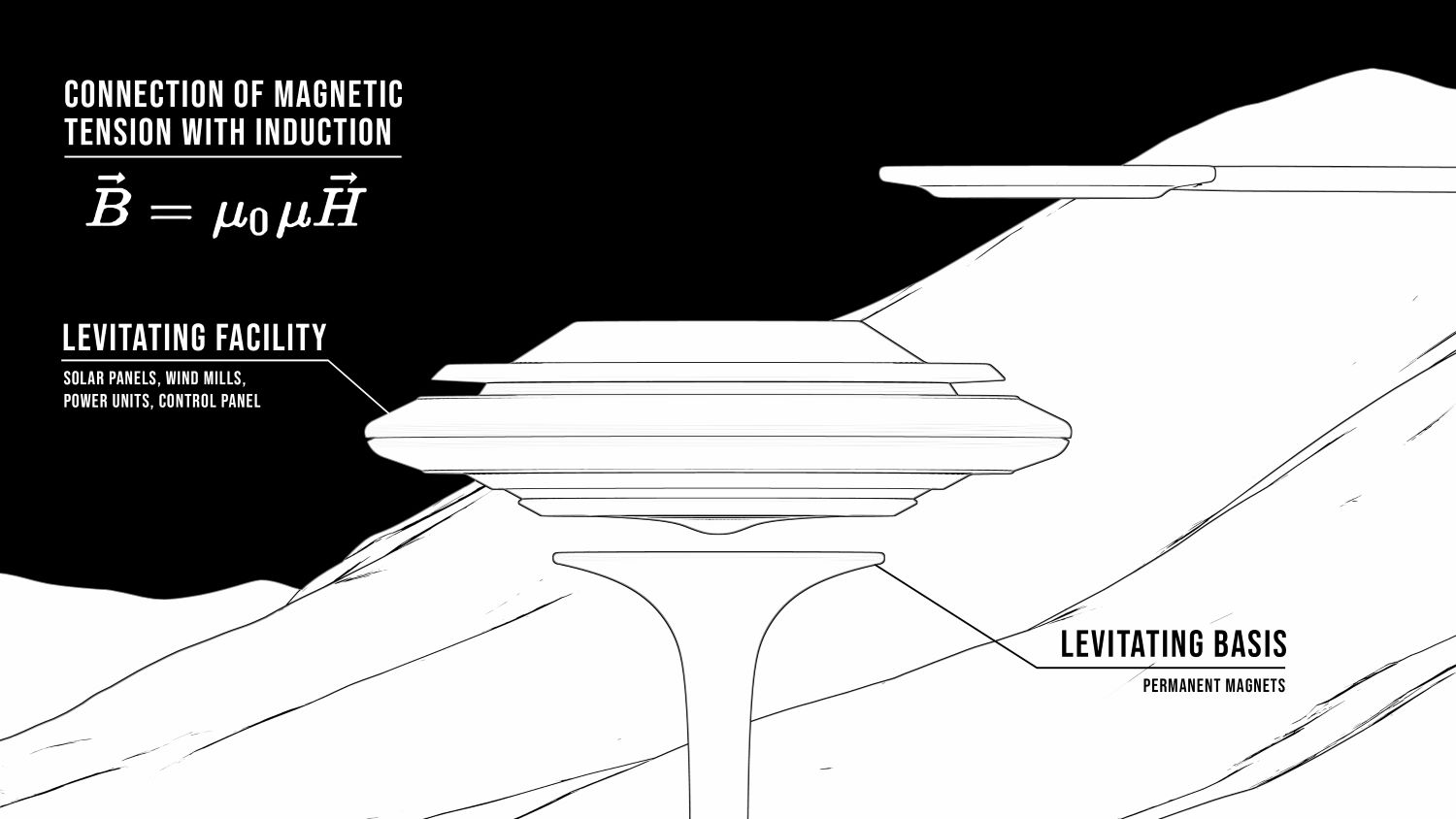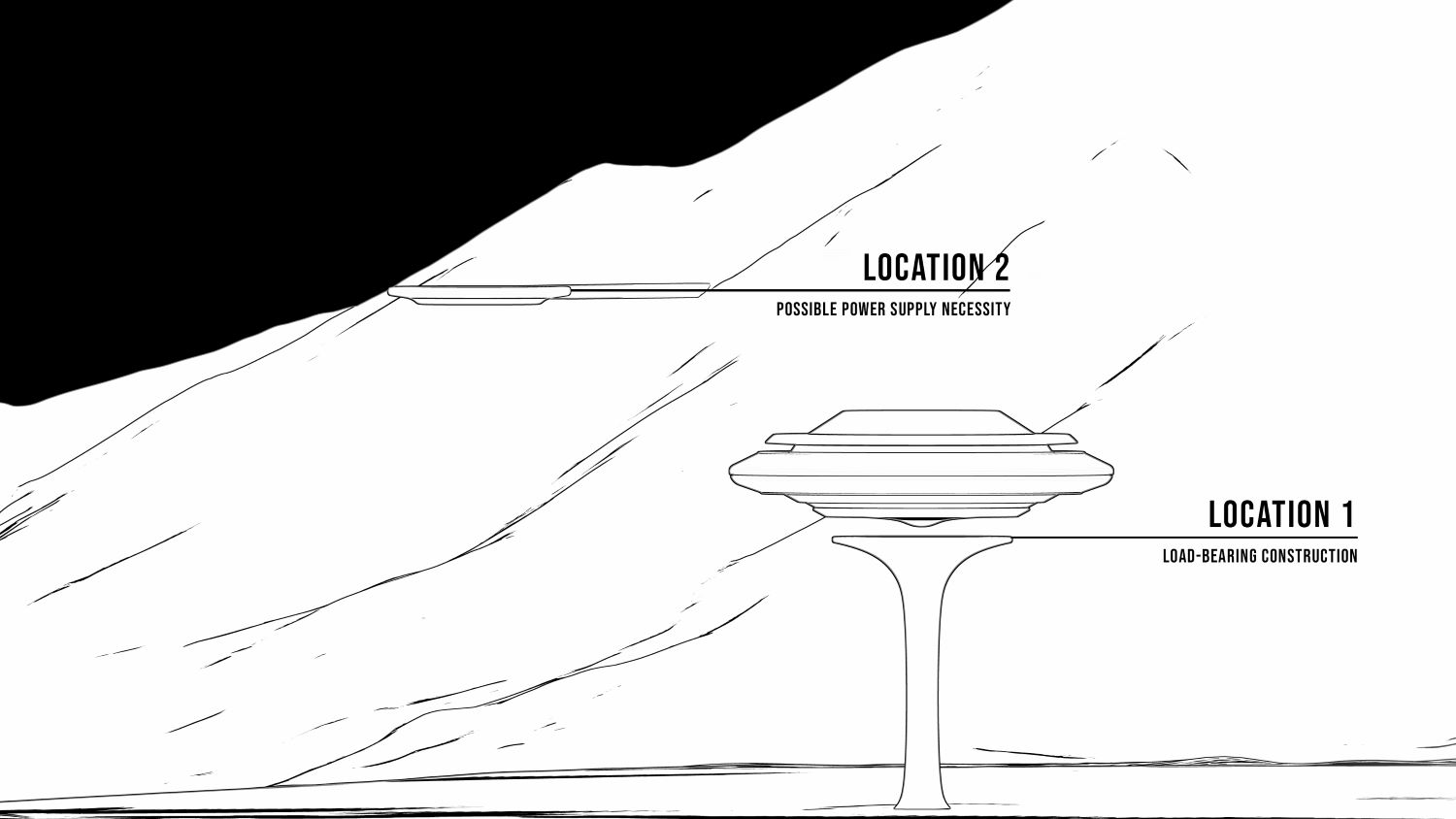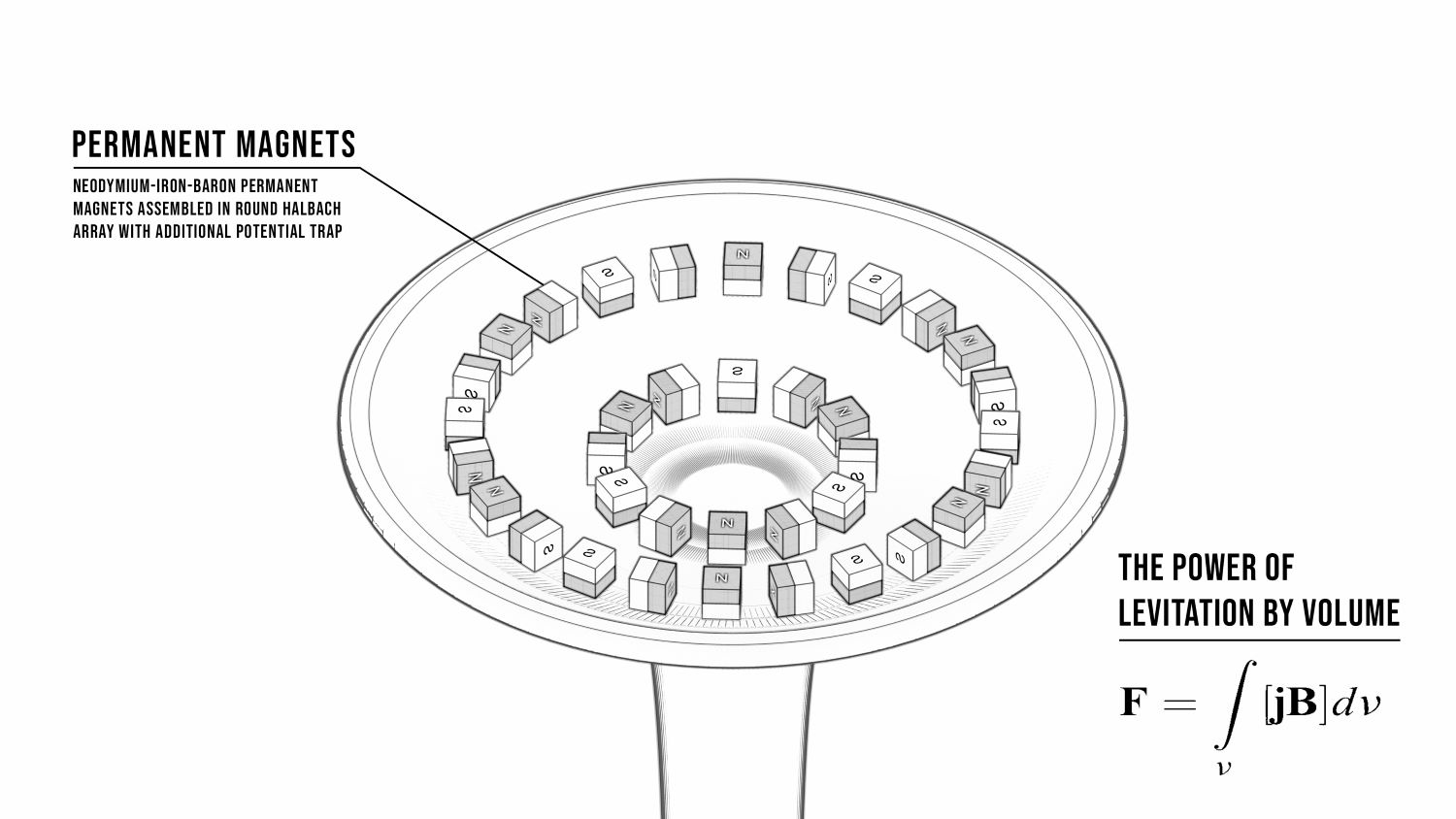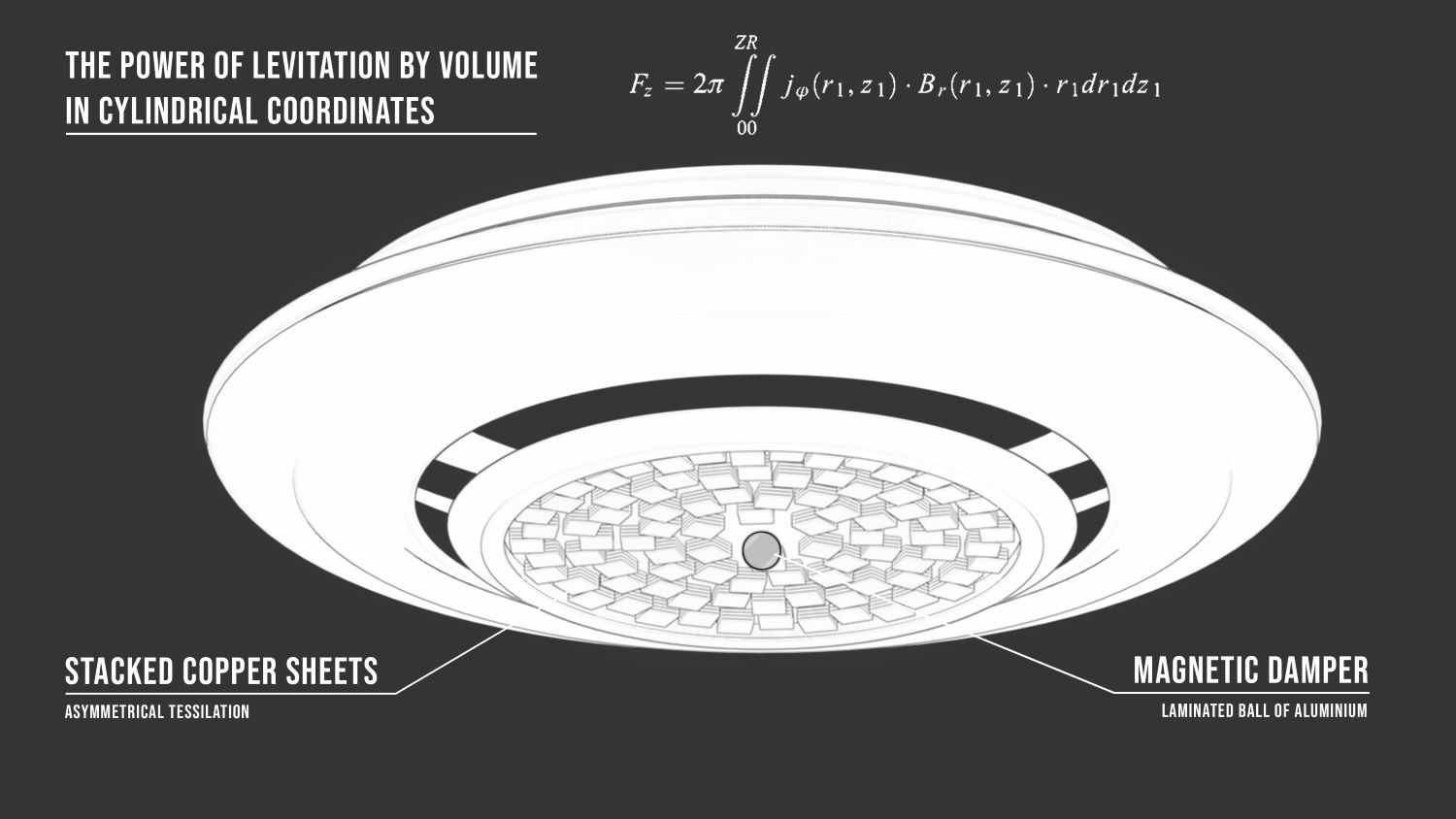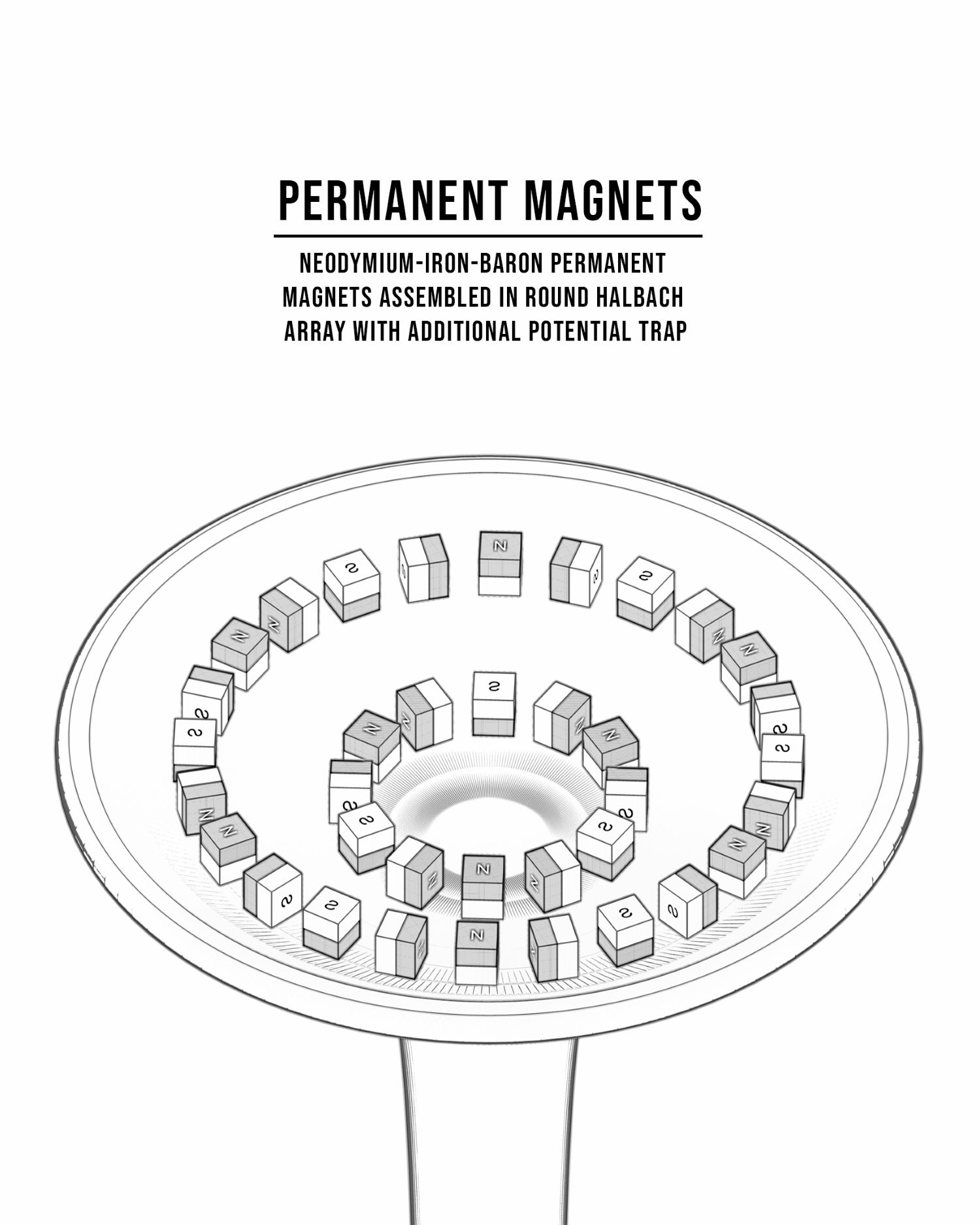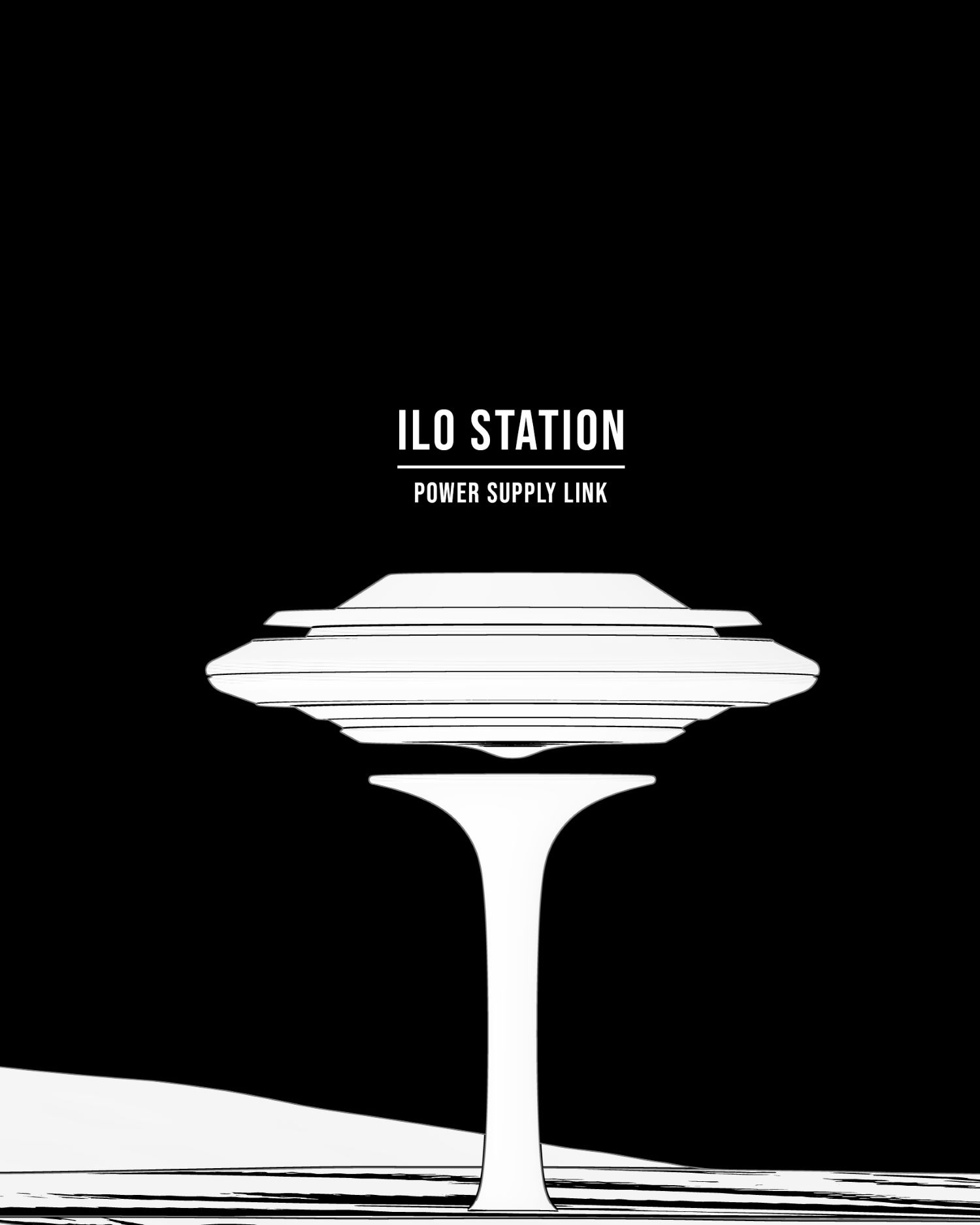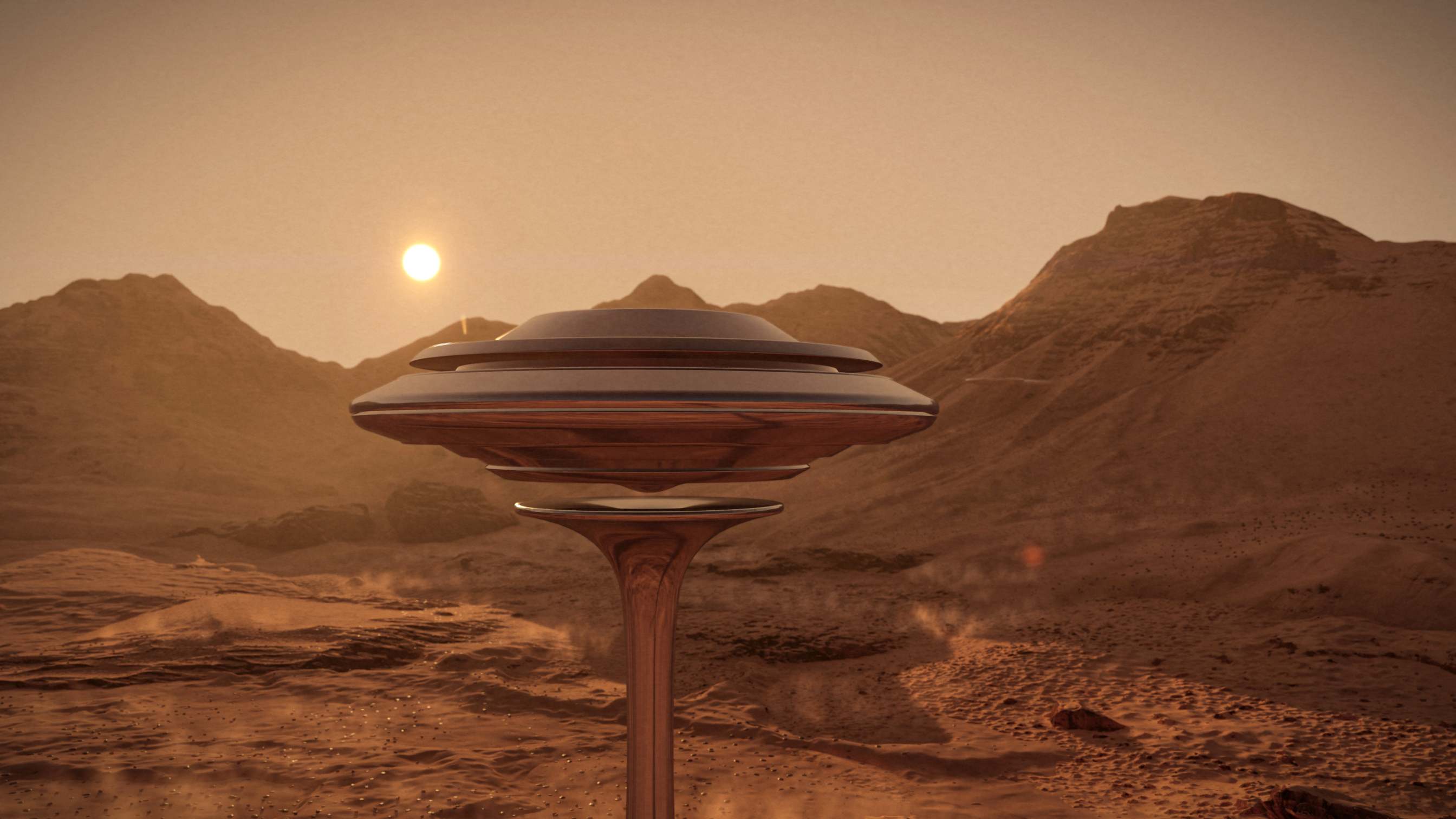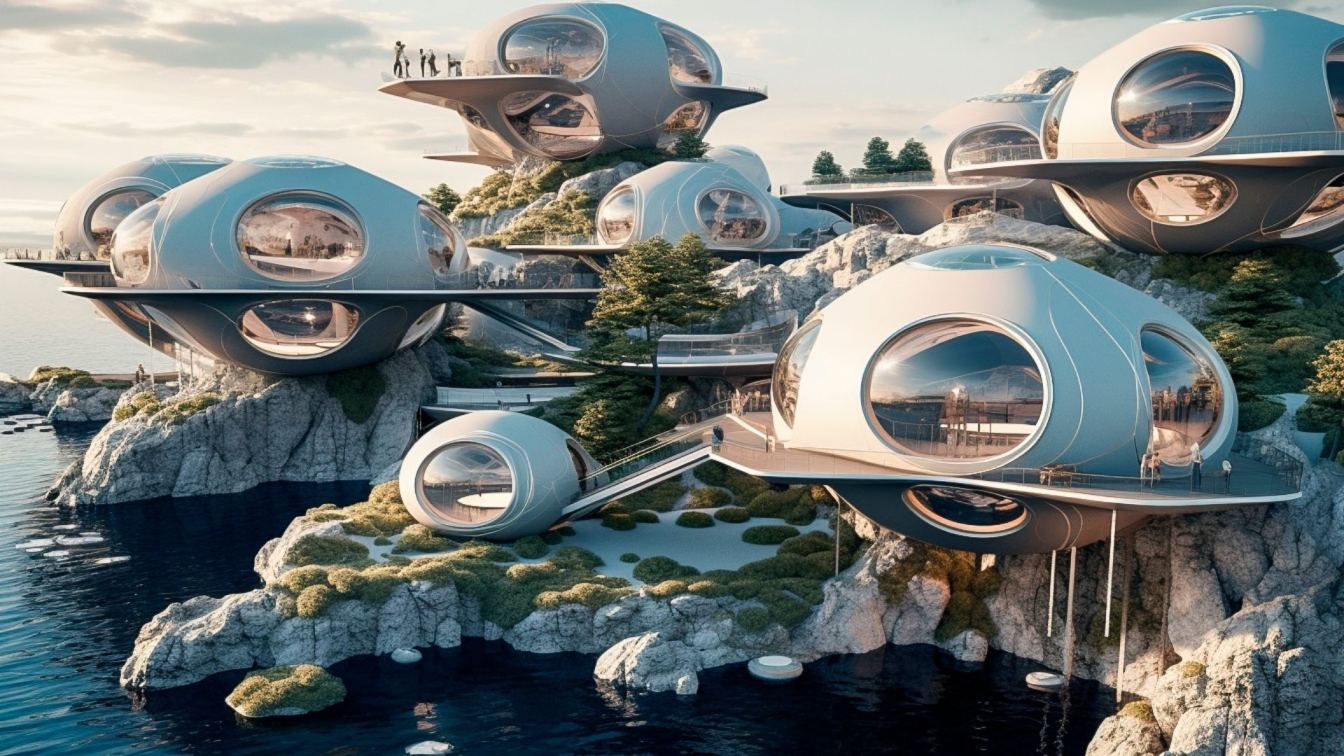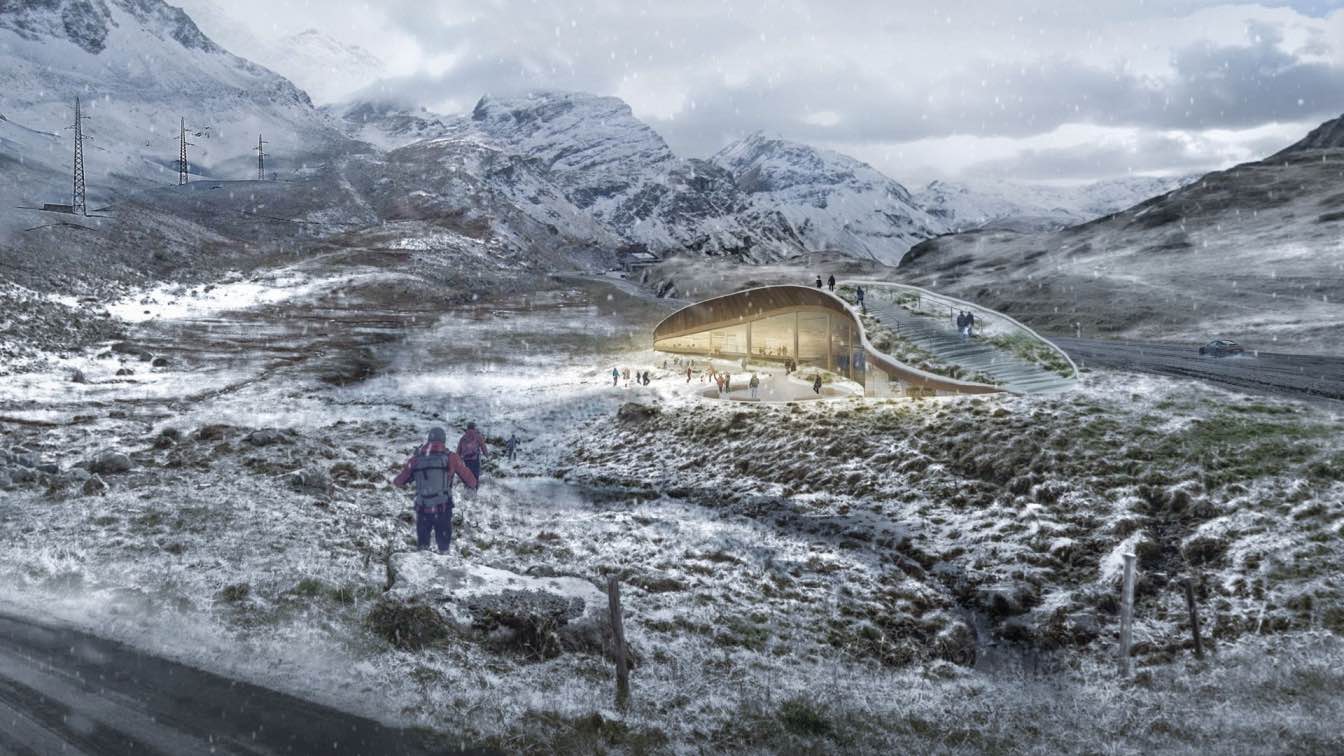Lenz Architects: We are pleased to present to you the result of a long architectural and scientific work from Lenz - production and research station ILO (Identified Levitating Object). Our architectural company organized a whole scientific group of physicists and engineers. The object is a static base and a levitating production station that moves with self-generated energy. We did not just create an architectural concept. Using a scientific approach and making a scientific conclusion, we calculated a magnetic levitation on Mars.
The main goal of the project is, of course, the solution of global problems of the Earth, such as air pollution, climate degradation and overpopulation. It is still very early to talk about a quality human life on Mars, because this requires at least hundreds of years of artificial terraforming of the planet.
We believe that in the near future, the red planet will help our Earth breathe. Simply put, we will be able to transfer industry and harmful production to Mars.
Therefore, the purpose of the building is production, accumulation of useful energy and research.
ILO station, using local materials, can produce the necessary modules and transport them to other bases. By collecting wind and solar energy, the station can conduct long-term exploration of the planet. Constant magnetic levitation allows you not to waste energy on takeoff and overcome difficult landscape obstacles.

Our facility can be used not only on Mars. The station can be adapted to the surface of the moon, which will help the detailed development of our satellite, which in the future will serve us as a kind of space terminal.
As you may have noticed, the design of the station resembles a flying saucer, that is, an unidentified flying object, ironically showing that people are now aliens themselves.
In a very beginning when we started to discuss the concept of Mars building, we found it amazing if our facility could levitate. Later on, working on broad specter of purposes for our station, and had concept of power supply link affirmed, we could truly appreciate the idea of magnetic levitation.
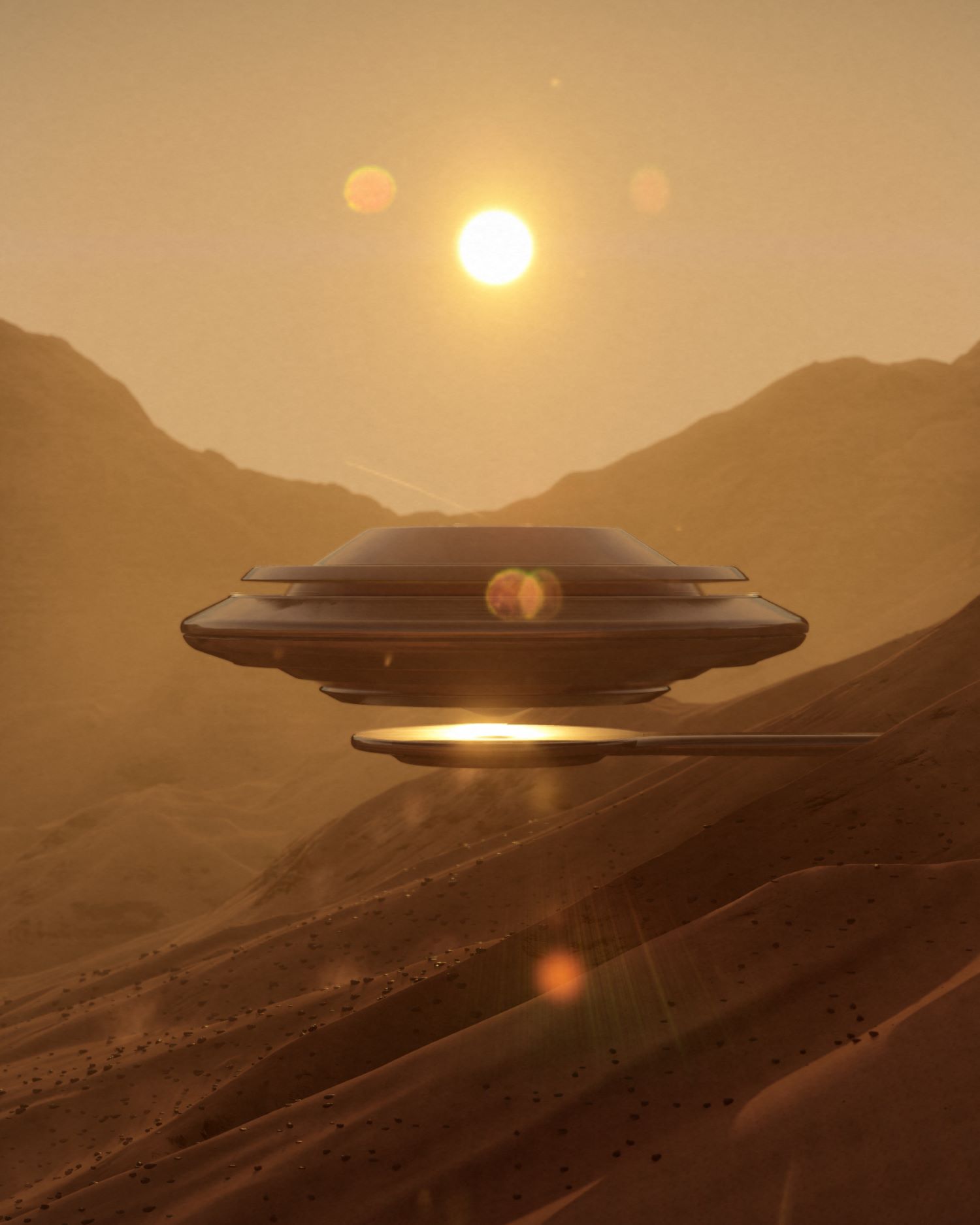
What for
No matter when or where Mars colonizers will start to build their first facilities, it would definitely require power source to operate hardware tools, give light, produce oxygen and meeting other needs. Having a fail-free, eco-friendly and efficient power supply is not a fancy gear - it is a significant necessity.
Why it levitates
Since our main purpose is power supply, which requires mobility and efficiency mostly, we need levitation for several reasons. Reason 1 - is rotation. To increase efficiency of solar panels, we have to keep angle of incidence somewhere between 70-90. Of course, it highly depends on where exactly station is located referring geographical coordinates. Ate the same time, that is why it has UFO round shape construction covered with wide broad angle compilation. Sum it up to slow rotation alike sunflower traces the Sun and you would get maximum efficiency. More of that is wind mills. Of course, geographical (if we could use that word in this context) position and constantly changing direction of winds (as we know on Mars hurricanes are ubiquitous) definitely requires station to adjust arrangement.
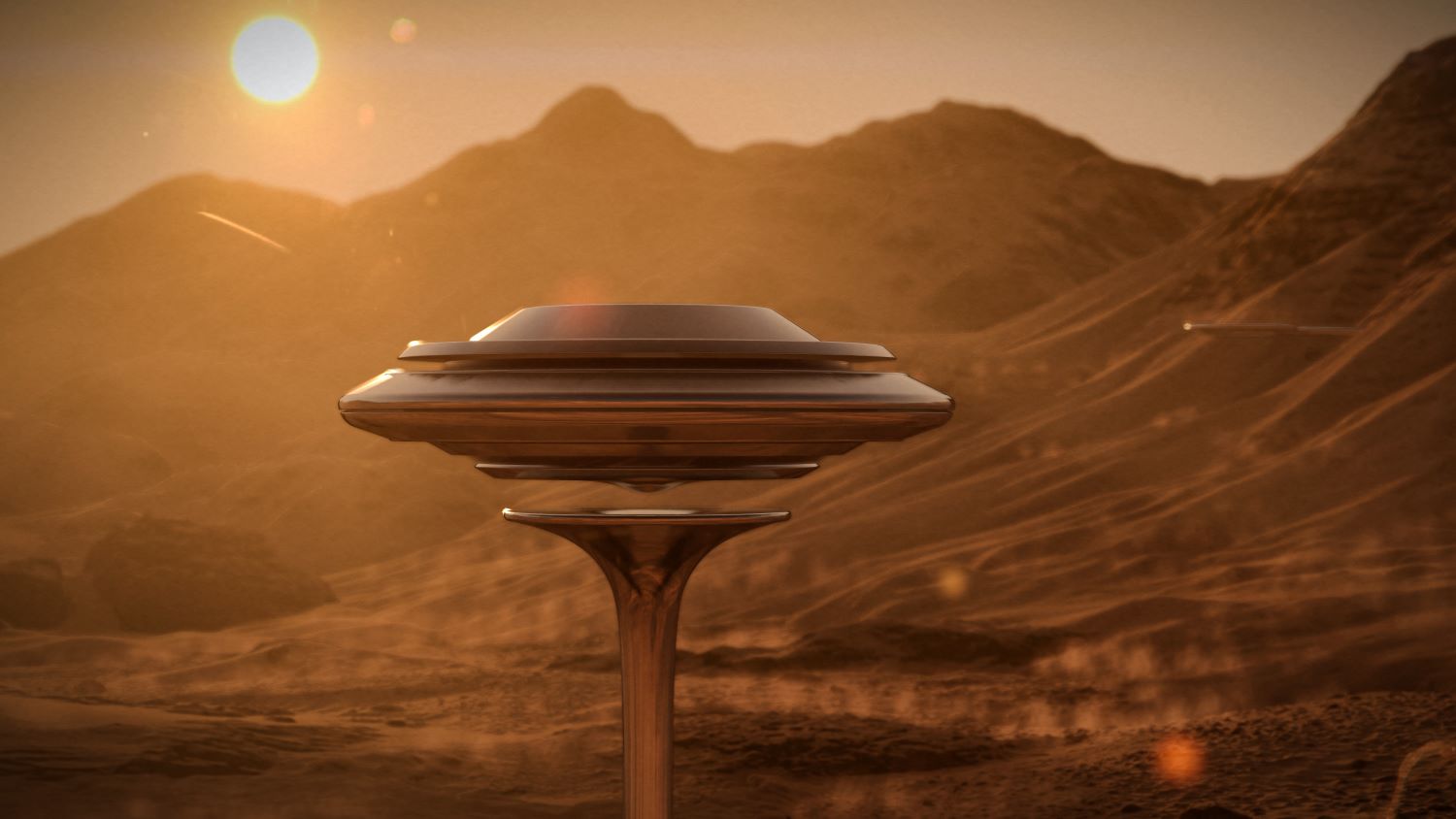
Sum it up to mobility How it works
Answer for this question is highly broad. Firstly, we needed to answer what kind of magnetic levitation technology is applicable for our demands. We put under consideration the following ones:
EMS (electromagnetic suspension) definitely was the first thought, that came across our minds, since it is the cheapest option and easiest to implement, but then we would have problem with stabilization and fault risks. Plus, we would need to spend crucial energy for maintaining and controlling levitation and damping processes.
EDS (electrodynamic suspension) doesn’t seem to be suitable also, mainly because of high power consumption and fault risk. Levitation system built on superconductivity principle, though, might have been an answer if not its non-autonomous concept (refrigerant to cool down superconductors despite the fact of relatively low temperature on Mars and developing technologies proposing superconductors on higher operating temperatures).

And then we found a way to stay fully autonomically, fault-safe and zero energy wasted - MagLev on permanent magnets. It is kind of a young technology. The Inductrack concept is what we believe the best option existed. In the base we tend to use neodymium-iron-baron permanent magnets assembled in Halbach special circuit array. Magnetic field resulting vectors aspire to the center, keeping the levitating object in borders of base. Low angular velocity of rotation, required for creating additional impedance also helps to auto-damp to compensate resulting oscillation of Earnshaw theorem. On the opposite side, the induction side itself, we have kind of a variation of Litz wire - stacked copper and aluminum sheets. As we mention aside it’s fully autonomous, fail-safe, energy-free system that damp itself.
Of course, it’s just theory that we checked, it’s legit, it’s possible on paper. Ahead we have the whole set of simulations, small scale experiment, environmental simulators and finally closest to real dimensions experiment.
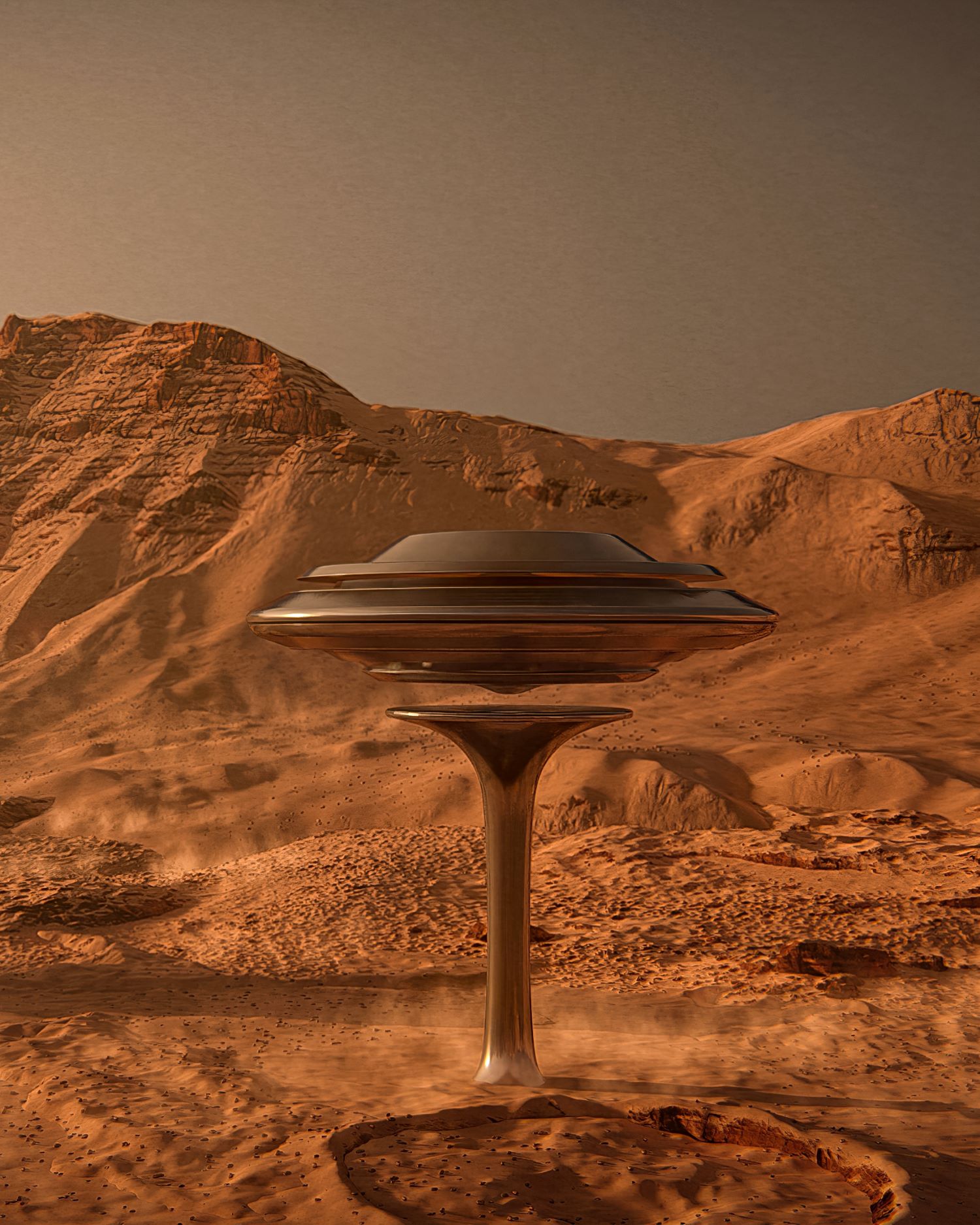
Final words
While we develop this project, we are going to face a lot of mistakes and issues. Learning nothing from those mistakes - is the mistake. It will be tough, we may overcome a lot more than we expect, but this is why it definitely worth it.
Our company has always been focused on innovations. We believe that together with our architectural approach, new scientific technologies and design, we will be able to pave the right path towards solving global climate problems.
